Wilmington, Delaware presents some interesting options when looking for a new place to live.
It does have its drawbacks, but it has a lot of upside as well.
A lot depends on how much of the downside you are willing to put up with.
It presents a rather low-cost option for east coast living, with plenty of waterways and beaches within easy reach.
It is close to cities like Philadelphia, has 200 sunny days per year, and has an overall friendly vibe.
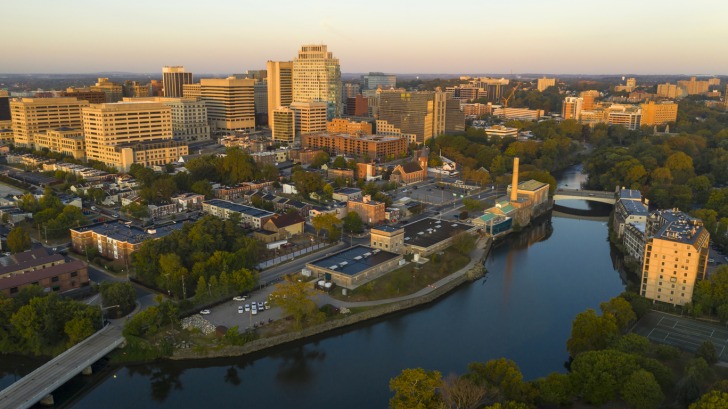
Contents
Pros of Living in Wilmington, Delaware
1. Good Quality of Life
Wilmington has a lot to offer, with both a suburban feel and a big city feel as well.
It is convenient to larger cities like Baltimore or Philadelphia and has plenty going on in itself.
The cost of living is relatively low.
It is on the Delaware River that flows into the Delaware Bay, which offers great scenery and lots of natural areas to enjoy.
It is a modern city by any definition and is very historic.
It is one of the oldest cities in America and has one of the oldest churches.
2. Tax-Friendly State
Delaware is tax-friendly for retirees, with social security and other retirement income not taxed.
Retirees over 65 do not pay property tax on the house where they live.
The state has no state income tax and no sales tax.
Property taxes are low compared to the region of New England.
Some counties and cities have small property taxes, but there is none from the state level.
It is also friendly for corporations from a tax standpoint.
3. Few Natural Disasters
There are not many natural disasters in Wilmington, but there can be snow and winter storms.
Hurricanes are a threat to the east coast, but they usually are not strong by the time they get this far north.
Earthquakes are unheard of hear.
Tornadoes are also rare in this part of the country.
There could be flooding, but so far there have been no major or catastrophic floods.
4. Location
Wilmington is about the same distance from Philadelphia and Baltimore.
New York City and Washington, D.C., are also within easy reach.
The city is at the southern end of the Philadelphia transit system, making transportation easy.
There is an Amtrak station, making getting to larger cities very easy.
It is indeed at the center of things.
At the northern edge of the state, it is very close to Maryland, Pennsylvania, and Virginia.
5. Beautiful Scenery
The city of Wilmington is on the Delaware River where it empties into the Delaware Bay.
There is a beautiful coastline with great views throughout the year.
There are a lot of parks in the city, and plenty of wilderness areas nearby to enjoy nature.
The city itself is old and has a lot of attractive older buildings that show the grandeur of the past.
A river walk in the historic downtown area provides inspiring views at any time of year.
6. Cost of Living
In general living on the coast costs more than anywhere else.
Wilmington is a bit of a surprise in that, while it is not exactly cheap, it does cost less to live here than other places on the East Coast.
The cost of utilities, groceries, healthcare, as well as various goods and services, are cheaper here than in other cities in the region.
This has made it an option for people who live in Philadelphia or Baltimore, where expenses are higher.
7. Housing Costs
One of the biggest obstacles to living on the East Coast is the cost of housing.
Wilmington, Delaware presents an interesting opportunity in this area.
Wilmington’s median price for a home is $257,000 which is well below the national average of over $300,000.
Most East Coast towns have much more expensive housing.
Almost half the people in Wilmington rent, and the cost of renting is about average.
House values have been going up, as much as 25 percent over the last 10 years, so the relatively cheap housing may not last.
8. Jobs
Wilmington has a dichotomy when it comes to jobs.
Unemployment is around 10 percent, far above the national and state averages.
At the same time, jobs are growing fast, at around three percent per year.
Jobs are expected to grow here as well.
Getting a job in Wilmington is easier than it is in other cities in the region.
A lot of people live in Wilmington and work remotely.
There are a lot of well-paying jobs available that require experience or expertise in various fields.
Cons of Living in Wilmington, Delaware
1. Crime
Wilmington has a very high crime rate, one of the worst in the nation.
There are some nice areas, but there are more areas that are not safe.
Violent crime is at 15 per 1,000 people, which is nearly four times the national average of 4.0.
Delaware is close to the national average.
Robbery and Assault are the most common violent crimes, far above the national average.
Property crime is nearly double the national average, with 44 per 1,000 in Wilmington, and 19 being the state and national averages.
2. High Unemployment
Unemployment is around 10 percent, which is far above national and state levels.
There could be a lot of reasons.
The main reason, however, is that many jobs here require experience and expertise in various fields.
Most jobs for unskilled labor are low-paying jobs, and that adds to the unemployment issue.
The per capita income is $27,000, below the national average of $32,000.
The jobs picture is looking better, but unemployment remains high.
3. Poverty
Wilmington has a serious poverty issue, with as many as 24 percent of the people living below the poverty line.
The national average is 13 percent.
It is odd considering that the state rate is 9.4 percent.
Unemployment contributes to this, but many people below the poverty level are unemployed.
The median household income is $40,000 in Wilmington, well below the national median of $57,000.
Wilmington has an estimated 400 homeless people, which is not a lot, considering the population, but poverty remains an issue.
4. Traffic
Wilmington is sort of a suburban community, meaning there are a lot of people living here and working elsewhere.
That leads to a lot of traffic issues.
Morning and evening rush hours can be very congested and frustrating for drivers.
Wilmington ranks as the seventh-worst city in the entire nation for traffic and by far the worst in Delaware.
The average commute time is 25 minutes, which is high no matter where you are.
Almost 80 percent of drivers commute either in their own car or in a carpool.
5. Urbanization
Wilmington is slowly losing its suburban vibe and is becoming more and more like a big city.
The city is getting more crowded, especially in summer when the weather is nice.
There are more apartment complexes being built, than new housing subdivisions.
More people per square mile tends to make people feel more crowded, and that can contribute to more crime and more poverty.
6. Education
Schools in Wilmington are not rated highly.
Test scores for reading, math, language, and arts, are all below the state.
Even so, U.S. News rated one of Wilmington’s high schools as the best in the state.
There are pockets of great education, but overall the schools do not have a good reputation.
A lot of people send their kids to schools in other towns, or to private schools.
7. Racial Disparity in Wealth
Wilmington is now 56 percent African American, 28 percent white, 15 percent Hispanic, and then there is everyone else.
Wilmington’s average income is $40,000, which is below the national average.
Household income for black families is at $30,000, about half that of white households.
A study showed that 58 percent of white families own their own homes, while that number is 40 percent for black families.
8. Weather
Wilmington has four distinct seasons, which is a positive.
The winters are very cold, however, and there is a fair amount of snow.
The city averages 15 inches per winter, and it is spread out so there are not often heavy snowfalls.
There is just enough to be inconvenient.
Flat land and large bodies of water contribute to low wind chills throughout the winter that lasts about four months.
The climate is pleasant most of the year, but winters are rather harsh.
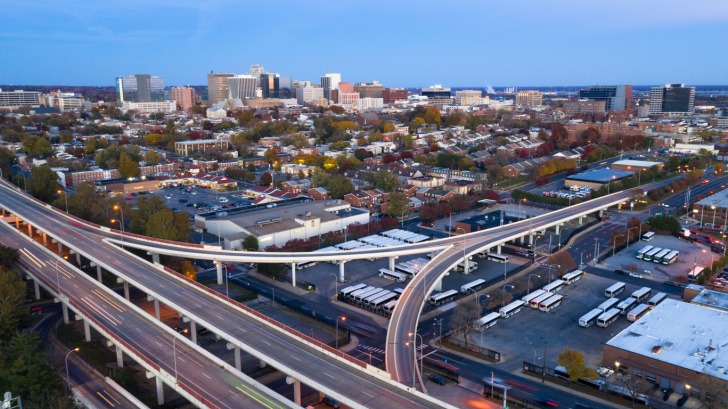
Pros and Cons of Living in Wilmington, DE – Summary Table
| Pros of Living in Wilmington, Delaware | Cons of Living in Wilmington, Delaware |
|---|---|
| 1. Good Quality of Life | 1. Crime |
| 2. Tax-Friendly State | 2. High Unemployment |
| 3. Few Natural Disasters | 3. Poverty |
| 4. Location | 4. Traffic |
| 5. Beautiful Scenery | 5. Urbanization |
| 6. Cost of Living | 6. Education |
| 7. Housing Costs | 7. Racial Disparity in Wealth |
| 8. Jobs | 8. Weather |
Frequently Asked Questions
What is the historical background of Wilmington?
The city was started in 1638 by Swedish immigrants.
It is one of the oldest cities in America.
It is also home to one of the oldest churches that is still operating in America.
It is the oldest Swedish church in America.
Is Wilmington shrinking?
To some extent, yes it is.
It had a population of 112,000 in 1940 and has gotten smaller since then.
From the 60s through the 80s it lost more than 12 percent of its population each decade.
The population has stayed around 70,000 since 1980.
How is public transportation in Wilmington?
There is a bus system, but it is limited in that it does not cover the entire town and has limited hours.
Wilmington is not a large city, so it is not hard to walk a lot of places.
While it is not the easiest city to get around in, it has easy access to major cities.
Buses and trains are readily available to take you to places like New York City and Washington, D.C.
How far is it to major cities from Wilmington?
Wilmington is 27 miles from Philadelphia, 65 miles from Baltimore, and 98 miles from Washington, D.C.
It is just over 100 miles from New York City.
This is why Wilmington is considered to be in the center of everything, with major cities so nearby.
What was the city's role in the Underground Railroad?
Wilmington was a key city in the Underground Railroad that helped African Americans escape slavery before the Civil War.
Today the Harriet Tubman byway goes through Wilmington and there are several Underground Railroad sites you can visit in Wilmington.
What is the racial makeup of Wilmington?
Wilmington is 54 percent African American, 26 percent white, and 13 percent Hispanic.
No other group is higher than two percent.
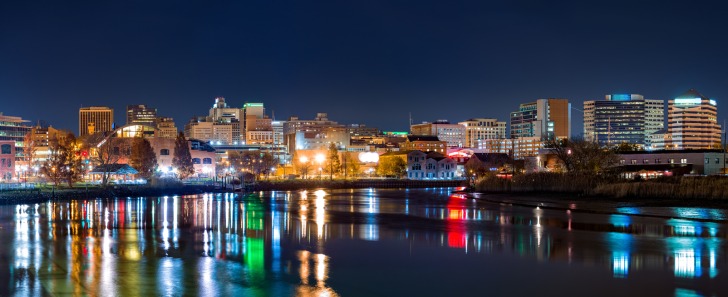


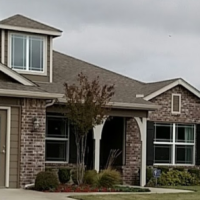
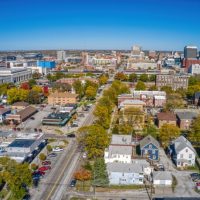







As someone who has lived in Wilmington, DE for several years now, I can say that it is a city with both its upsides and downsides. On the positive side, there are plenty of job opportunities available and the cost of living is relatively low compared to other East Coast cities. The location also offers easy access to larger cities like Philadelphia and Baltimore as well as beautiful scenery along the Delaware River.